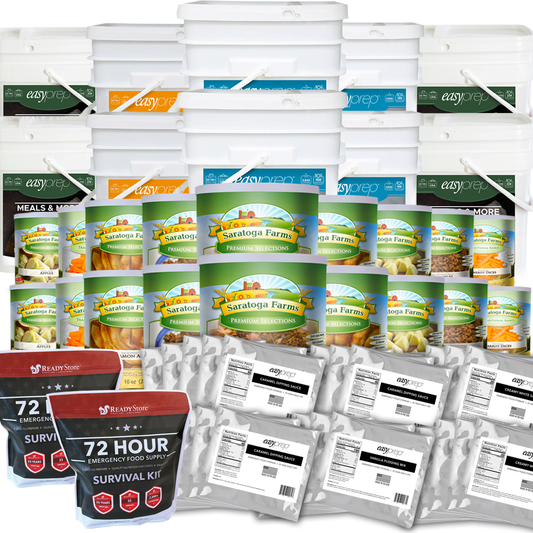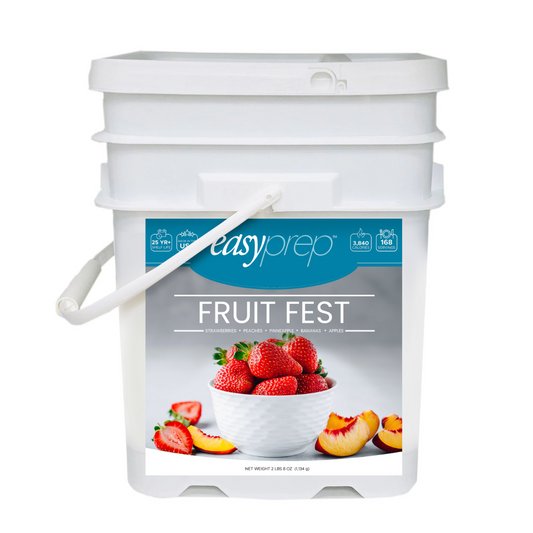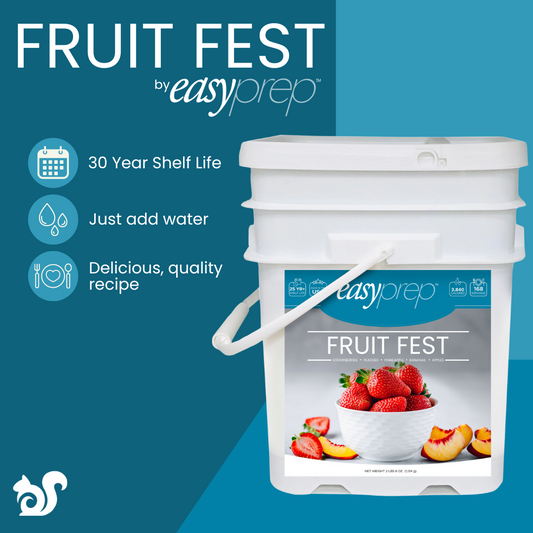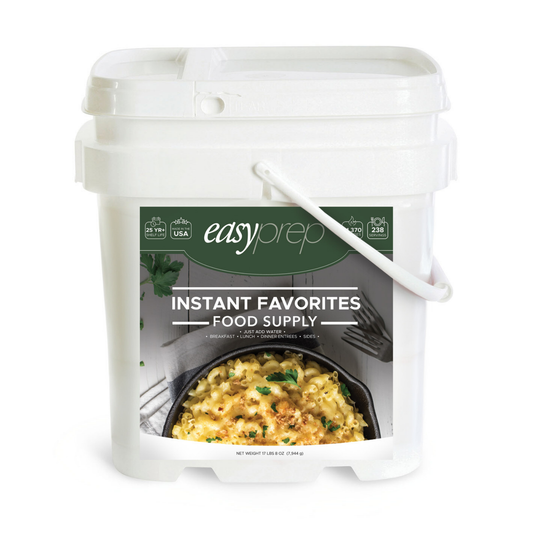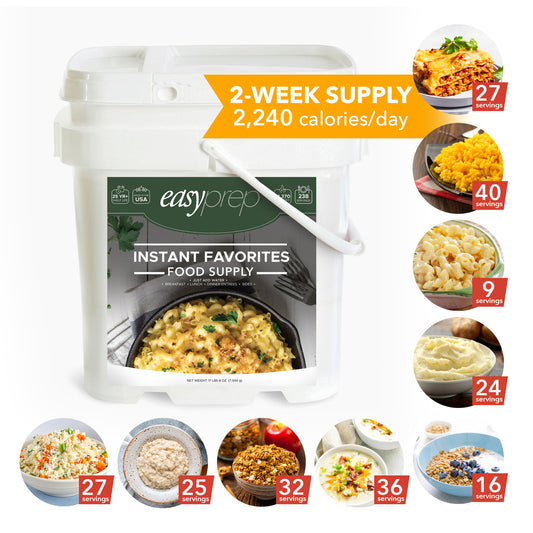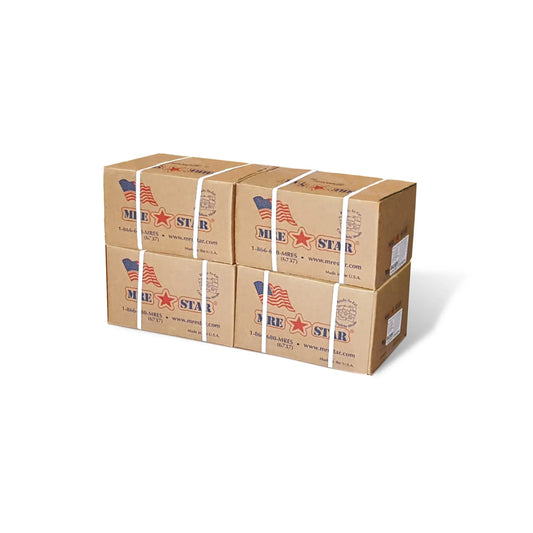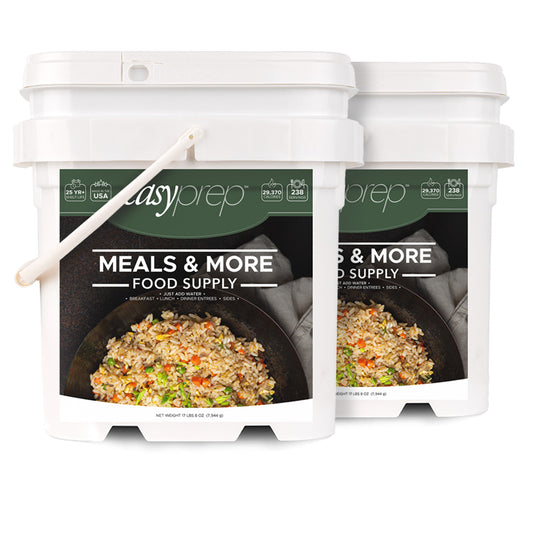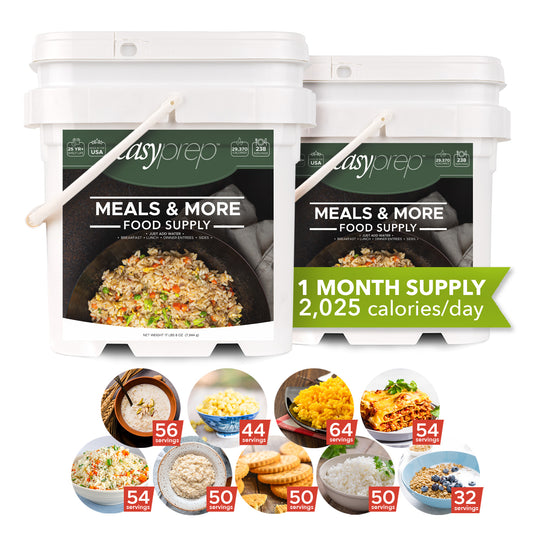What are the Different Types of Food Storage?
01 Jul 2010
The term food storage is used very loosely in the emergency preparedness industry. Depending on the person who is sharing the information it could be anything from a bucket of beans to the canned goods you buy at your grocery store. So what are your options? What is going to work best for you? Below are the some popular options available to help best suit your needs for your emergency food supply.
Regular Canned Goods
This is usually where people start with their food storage. The idea is that you buy a few extra cans of the goods you usually eat when they go on sale and try and get to the point where you have a 2-week supply of extra food. The great thing about this option is that it's easy and you use the food that you're familiar with. It saves you from rushing to the grocery store if a storm is coming. However, this shouldn't be a permanent solution to your food storage needs due to the shelf-life limitations.
Shelf Life. Most cans of goods that you buy at the grocery store last a few months - maybe a year if you're lucky. The best rule of thumb with canned food is that it will last at least 2 years but you'll find a lot of canned food will last much longer than that - possibly up to 5 years. Foods that contain a higher acid content such as tomatoes and fruits will be closer to the 2-year range. If you deal with canned goods that are past the expiration date, carefully inspect the food with the "sniff" test and determine whether it's spoiled or not. So as a long-term solution, this has it's weaknesses for sure. However, as a way to start your food storage, it's a great option.
One tool that makes it really convenient to circulate your inventory is the FIFO Can Tracker. You just input all your cans and when you need your corn for your Sunday dinner just grab the bottom and & it will move all the contents down the line. When you restock your shelf just simply insert the cans in the top rack and it will fall into place and you can walk away knowing that the can you put in first will come out first.
Preparation. When your local grocery store has a big sale on all canned goods, you might start buying up as much as possible, but not really taking to heart what you're buying. True, baked beans at $0.30 per can is a great deal, but do you really want to live on baked beans during an emergency? Look in your pantry and write down the canned items that you have and the next time you go grocery shopping just pick up those items so you can stock up your food storage.
Dry Bulk Food
Dry bulk food might be something you recall your parents or grandparents would have set aside in cold storage. These are items like wheat, rice, beans, sugar, rolled oats and other staples packaged in large bags or large buckets.
Shelf Life. One of the reasons that the older generations loved these staples was because they stored for so long. Most dry goods will store for a very long time. If stored at an ideal temperature (75º F. or lower) as well as proper packaging for long-term storage, if it is stored properly your beans, rice, and wheat could store for 10-20 years.
Preparation. When dealing with dry bulk food items it can be difficult to turn the dry goods into something edible. If you choose this option you'll need to have a lot of supplies in order to cook and prepare these items. You'll need a wheat grinder in order to turn your wheat into flour - or to an edible source of food. You will also need additional ingredients to turn the goods into a meal. One other thing to take into consideration is that you will need fuel and a heat source in order to bake or to cook the goods. So just remember that you'll also want to have enough supplies to help with preparing your dry bulk goods.
Taste & Nutrition. With dry bulk storage you will typically give you an excellent nutrition. As for the taste, that depends on your cooking supplies that will help you turn a boiled pot of beans into a flavorful meal. I would recommend you do some research in what you can make with your dry bulk foods. You can do a simple search at your local book store & you might find some cooking books that could assist you with preparing some good meals.
Dehydrated Food
Dehydrated food storage is a shelf-stable food that is processed using high heat. Basically, they are items that have been dried for preservations. With the high temperature, it removes the moisture from the food which allows for the extended shelf life.
Shelf Life. Recently, a study conducted by Brigham Young University has discovered that the shelf life of dehydrated food will have anywhere from 10-20 years. It's also ideal to store your dehydrated food in a location that is in a cool dry location (75º F. or lower) to get the most maximized shelf life.
Preparation. Most dehydrated food does require that you cook it. This will require fuel, a stove, and the time to cook the food. Sometimes, dehydrated soups require a cooking time of 15-30 minutes.
Taste & Nutrition. Again, because of how the food is processed by using heat, it will affect the foods flavor & also remove 25% of the nutritional value of the food. You will also find that with dehydrated food it just wont taste quite the same or due to the heating processes it will discolor the food. If you have picky eaters they might turn the food away.
Freeze-dried Food
Freeze-dried food has been used since the space age to provide the astronauts with food that is lightweight and compact. Where dehydration uses evaporation to get the food out, freeze-dried food uses high-end technology that zaps the moisture out of the food quickly - keeping 100 percent of the natural nutrients, enzymes and taste. For a long-term food storage, I would recommend freeze-dried food as your best choice.
Shelf Life. Freeze-dried food will give you the longest shelf life hands down. You will get at least 25 years or more depending on what cool temperature (75º F. or lower) it can be stored at. I have herd of 40 year old freeze-dried food being tested and it has lost very little taste or nutritional value.
Preparation. The food is designed for you to just add water, stir and wait about 5-7 minutes and you will have a hydrated and ready-to-eat meal. It will make your fuel costs are very low and you wont spend your valuable time in preparation.
Taste & Nutrition. Now, this is what makes freeze-dried food such a find for food storage. Due to the process that makes the food freeze-dried actually "freezes" the food's flavor and locks it in and allows the food to taste like fresh food. The flavor isn't muted or dull and the texture, color will all look fresh. The nutrition of freeze-dried retains 99% of the vitamins, nutrients and enzyme's of the fresh food.
Now, that you understand the differences between the different types of food storage, you'll better be able to choose which is the best option for your family. Comment below with any questions or concerns that you might have.


